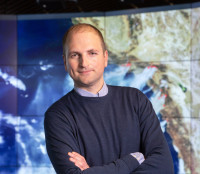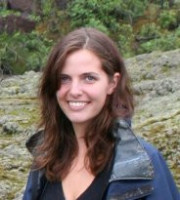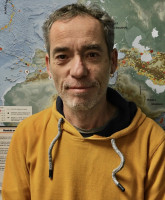Natural Catastrophes
Earthquakes & Seismic Hazards
Post-Doctoral Fellowships
France
2013.12.31
A seismic and tectonic model of the Lesser Antilles subduction zone: contribution to seismic hazard assessment
The answer depends on the precise nature of the plate boundary here, its structure and physical properties. Dr. Michele Paulatto is using geophysics to create a 3D model of the zone responsible for earthquakes, which lies between 5 and 50 kilometers below the ocean floor. By studying the way waves of elastic energy move through the Earth in this zone, he can tell what kind of material they have passed through and whether they encountered fluids. The latter might be water or carbon dioxide held in the crust. As one plate slides under the other, its fluids will be released, due to pressure and chemical processes. This can change the mechanics of the plate interaction and, thus, its capacity to cause earthquakes: fluids in the subduction zone can reduce the degree of coupling between the plates and allow them to slip without causing an earthquake.
Analyzing seismic wave data from man-made sources lets Dr. Paulatto obtain high-resolution images closer to the surface. Combining that with local earthquake data allows him to see even deeper. So far, his analyses have identified a layer of high-fluid content on top of the subducting plate and shown that this region varies in depth along the subduction zone. His analyses continue, but he suspects that variability in the fluid-rich material entering the zone may play a significant role in the degree of coupling of the two plates and influence which locations are the greater seismic hazards. Dr. Paulatto’s conclusions and their applications for risk assessment and monitoring should prove vital to this earthquake-prone region and to the 4 million people who call it home.
Sliding or Sticking: The Role of Fluids in an Earthquake Source Zone
To add or modify information on this page, please contact us at the following address: community.research@axa.com

Michele
PAULATTO
Institution
Université Nice-Sophia-Antipolis
Country
France
Nationality
Italian
Related articles
Natural Catastrophes
Climate Change
Wildfires
Climate Adaptation & Resilience
Global Warming
AXA Chair
Greece
AXA Chair in Wildfires and Climate
The consequences of climate change have never been as substantial and visible in such a wide range of places around ... Read more

Apostolos
VOULGARAKIS
Technical University of Crete
Natural Catastrophes
Volcanic Eruption
Joint Research Initiative
United Kingdom
2018.12.31
Volcanic Risk Assessment in Asia
Assessing volcanic ash hazard footprints in Asia In the language of insurance, a large volcanic ash plume represents what is... Read more

Susanna
JENKINS
